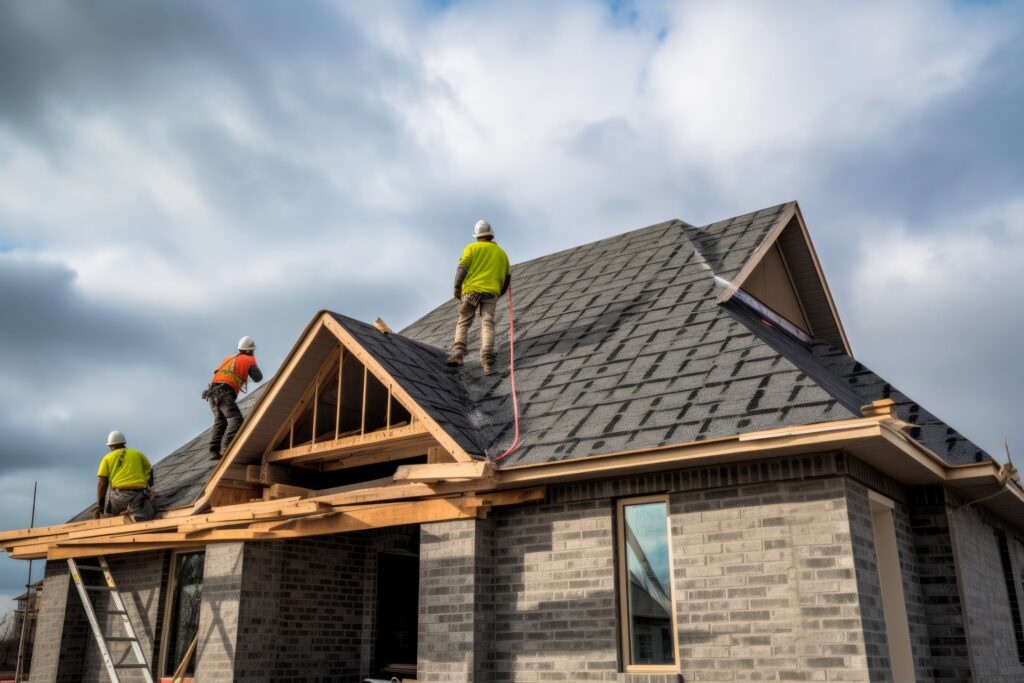Extreme weather conditions can put your roof’s integrity to the test. Since these events are unforeseen, they can lead to devastating outcomes and losses. Insurance coverage for roofing repairs provides homeowners with peace of mind, as they do not have to worry about the effects of nature. However, this financial lifeline may either provide comfort or put homeowners in a challenging scenario. Navigating the network of insurance policies to discover what covers work for your situation and budget is a major challenge. In this article, we will look at situations involving roof repairs that insurance companies cover to give homeowners the information they need to survive any storm.
How it Works
Roof insurance coverage operates as a safeguard against unforeseen damages to the structure’s overhead shield. Typically, policies encompass various perils such as fire, windstorms, and hail, which pose threats to the integrity of the roof. When damage occurs, policyholders initiate a claim, which prompts an assessment by insurance adjusters to evaluate the extent of the impairment and its eligibility for coverage.

Does your insurance cover your roof repair?
Factors like age, material quality, and the cause of damage influence reimbursement amounts. Deductibles, predetermined by the policy, represent the portion the insured must cover before insurance kicks in. Overall, roof insurance provides a vital safety net; ensuring homeowners can weather unexpected roofing challenges without bearing the full financial burden.
What it Covers
Fire Damage
In the event of a fire damaging your roof, coverage may extend to repair or replacement costs, contingent on the specifics of your policy. Insurers assess the extent of the damage, considering factors like the cause of the fire and the condition of the roof prior to the incident. Depending on the policy terms, coverage may encompass not only the roof structure but also related components like shingles or underlying materials. Timely communication with your insurer and documentation of damages are crucial steps in navigating the claims process effectively.
Windstorm & Hail
Insurance adjusters use a variety of procedures, including visual inspections and sophisticated imaging technology, to assess the amount of damage caused by wind or hailstorms. They check shingle or structural integrity and any compromised areas susceptible to leaks or further deterioration. The assessment procedure considers factors like wind speed, roof age, and hail size. The coverage takes care of repair or replacement expenses for such damages, according to the conditions of the policy and the deductible. The goal of insurance companies is to return roofs to their pre-damage state to protect homeowners from the financial strain of unplanned natural disasters.
Falling Objects
When objects plummet onto a roof, whether due to storms or accidental occurrences, insurance coverage often extends to repair or replacement costs associated with resultant damages. This protection encompasses structural impairments, such as punctures, cracks, or dislodged shingles, ensuring that homeowners are safe against unforeseen events. However, policy specifics may vary, necessitating a thorough review of terms and conditions to ascertain the extent of coverage for falling object incidents, thereby providing homeowners with comprehensive reassurance against potential roof-related liabilities.
Water Damage
A roof insurance policy that covers this type of peril shields homeowners from the financial repercussions of unexpected leaks or structural compromises. Typically, such policies encompass various scenarios, including damage caused by burst pipes, heavy rainfall, or snowmelt seepage. The coverage often extends to interior harm, such as ceiling discoloration or compromised insulation, stemming from roof leaks. Insurance providers will look at other factors like age or roof condition when assessing claims. A comprehensive coverage gives homeowners peace of mind knowing they remain safe against unpredictable forces of nature.
Restrictions and Omissions
Although they offer essential protection, roof insurance plans frequently include restrictions and exclusions that homeowners should know. These plans put the responsibility for routine maintenance onto homeowners by excluding losses resulting from normal wear and tear, gradual deterioration, and neglect. Moreover, issues arising from natural disasters like earthquakes, floods, or hurricanes might fall outside the coverage spectrum, necessitating additional policies or riders for comprehensive protection. Certain materials or construction methods may not be included in the policy, rendering specialized repairs ineligible for reimbursement. Understanding these limitations empowers homeowners to mitigate risks effectively, supplementing policies with preventive measures and tailored coverage where necessary.
Understanding the fine points of insurance coverage for roof repairs is essential for homeowners coping with the aftermath of damage. While plans vary, having structural integrity coverage for common threats like storms, fires, and vandalism provides a sense of confidence. However, attention to analyzing policy provisions and quick communication with insurers remain critical practices for protecting one’s home and financial stability from unanticipated roofing issues.
